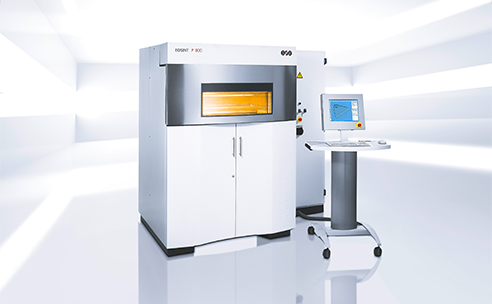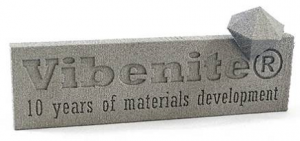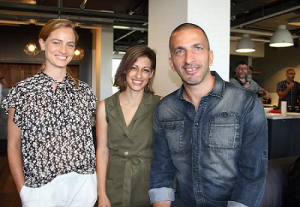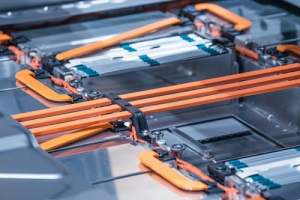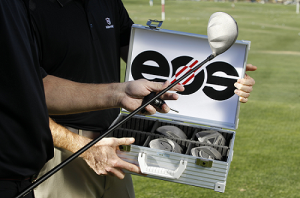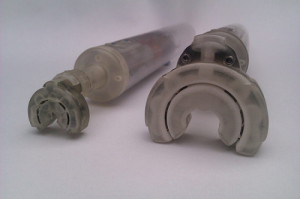For this edition of 3D Printing News Briefs, we’re starting off with a celebration – Scansite created 3D printed replicas of the spacesuit that Neil Armstrong wore for the 50th anniversary of the moon landing. Moving on to business and metals, 3D Hubs has hired a new Managing Director for the US, and DigiFabster published a case study. IAM 3D HUB’s newest technological partner is ArcelorMittal, and finally, SmarTech Publishing released some new research on metal powder bed fusion.
Scansite Creates 3D Printed Replicas of Famous Spacesuit
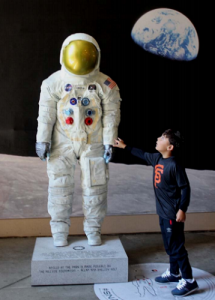 Just over 50 years ago last month, Neil Armstrong became the first man to walk on the moon, and people around the world have been celebrating this important anniversary. In 2015, the Smithsonian National Air & Space Museum launched a Kickstarter campaign to conserve, preserve, and digitize Armstrong’s spacesuit from that fateful day; this year, to commemorate the anniversary, the museum contacted Scansite to create 15 extremely faithful replicas of the suit for its 50th celebration of the moon landing. The interactive, life-sized “Apollo at the Park” replicas were made to display at 15 MLB ballparks around the US, together with an augmented reality app so visitors can learn important facts about the Apollo 11 moon mission.
Just over 50 years ago last month, Neil Armstrong became the first man to walk on the moon, and people around the world have been celebrating this important anniversary. In 2015, the Smithsonian National Air & Space Museum launched a Kickstarter campaign to conserve, preserve, and digitize Armstrong’s spacesuit from that fateful day; this year, to commemorate the anniversary, the museum contacted Scansite to create 15 extremely faithful replicas of the suit for its 50th celebration of the moon landing. The interactive, life-sized “Apollo at the Park” replicas were made to display at 15 MLB ballparks around the US, together with an augmented reality app so visitors can learn important facts about the Apollo 11 moon mission.
“Baseball parks are the perfect venues for new generations to learn more about that summer night on July 20, 1969. The spacesuit replicas allow us to bring a piece of Apollo to Americans everywhere,” said Ellen Stofan, director of the National Air and Space Museum.
Scansite conducted high resolution 3D scanning of the original spacesuit, which was tricky because it features many details and different materials. The company used both a Breuckmann structured light scanner and a Faro touch probe to acquire the scan data, which resulted in a file with over 5.3 gigabytes of data. The data was edited, using surrounding topology of each hole in the information as a guide to fill everything in, and Scansite created a full-scale 3D print of the spacesuit, in 16 separate panels, on a Voxeljet 3D printer out of porous acrylic material. The sections were glued together to create the master model, which was then used to make a mold; finally, each replica was hand-sanded and painted, finished with a tough, autobody clear coat, and mounted on an engraved granite base.
3D Hubs Names Robert Schouwenburg as US Managing Director
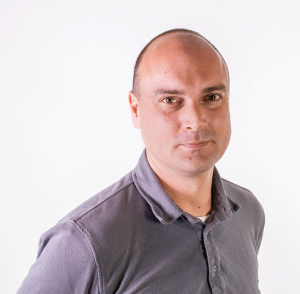 Online manufacturing marketplace 3D Hubs announced that Robert Schouwenburg, the former COO & CTO of Shapeways, will be joining the company as its Managing Director for the USA. The company recently announced an $18 million funding round, which it’s been using to expand its team in the US, including opening a new North American headquarters at Chicago’s mHUB. Schouwenburg has over 20 years of experience in the industry, and will be working with the Chicago team to better service the company’s North American customer base, in addition to expanding 3D Hubs’ CNC machining services offering in Chicago.
Online manufacturing marketplace 3D Hubs announced that Robert Schouwenburg, the former COO & CTO of Shapeways, will be joining the company as its Managing Director for the USA. The company recently announced an $18 million funding round, which it’s been using to expand its team in the US, including opening a new North American headquarters at Chicago’s mHUB. Schouwenburg has over 20 years of experience in the industry, and will be working with the Chicago team to better service the company’s North American customer base, in addition to expanding 3D Hubs’ CNC machining services offering in Chicago.
“We’re at the start of ‘industry 4.0,’ an era when automation and data exchange will accelerate manufacturing technologies, and 3D Hubs is uniquely positioned to become a leader in this upcoming industrial revolution,” stated Schouwenburg.
DigiFabster Helps MakeItQuick Lower Costs and Increase Revenue
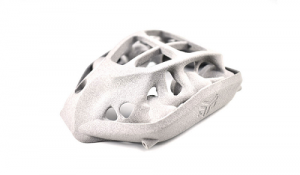 3D printing software and services provider DigiFabster recently released a case study about its customer MakeItQuick, a UK 3D printing service bureau. DigiFabster helps machine shops and service bureaus like MakeItQuick generate more new revenue, while lowering the cost of labor-intensive activities such as order entry, project management, and quoting. MakeItQuick teamed up with DigiFabster not long after it launched, and quickly started seeing results – the company was able to reduce quoting costs by up to 95% and order transaction costs by up to 85%. This allowed MakeItQuick to scale quickly and grow their revenues by 25% a month.
3D printing software and services provider DigiFabster recently released a case study about its customer MakeItQuick, a UK 3D printing service bureau. DigiFabster helps machine shops and service bureaus like MakeItQuick generate more new revenue, while lowering the cost of labor-intensive activities such as order entry, project management, and quoting. MakeItQuick teamed up with DigiFabster not long after it launched, and quickly started seeing results – the company was able to reduce quoting costs by up to 95% and order transaction costs by up to 85%. This allowed MakeItQuick to scale quickly and grow their revenues by 25% a month.
“The software handles 90% of our quotes without the need to manually review every part that is submitted. The time savings were immediately evident,” said Marco Massi, the owner of MakeItQuick.
“We save even more once a quote is confirmed. All the order details are at hand, giving us the opportunity to analyze the data and decide on the best way forward.
“In less than a year with DigiFabster, our revenue has grown steadily. We’re now experiencing a 25% monthly revenue increase, paving the way for our future success.”
IAM 3D HUB’s New Technological Partner
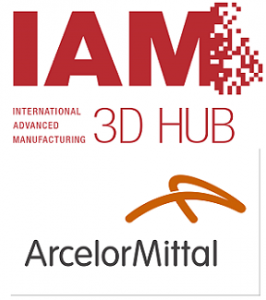 The latest technological partner of AM technology incubator IAM 3D HUB is ArcelorMittal, one of the world’s top steel and mining companies. The company, which has a presence in 60 countries and an industrial footprint in 18, will support the Barcelona-based hub with its technologies, materials, and knowledge to allow for new applications of and metal materials for 3D printing. The two share similar objectives, but ArcelorMittal hopes to use its experiences to contribute a new point of view.
The latest technological partner of AM technology incubator IAM 3D HUB is ArcelorMittal, one of the world’s top steel and mining companies. The company, which has a presence in 60 countries and an industrial footprint in 18, will support the Barcelona-based hub with its technologies, materials, and knowledge to allow for new applications of and metal materials for 3D printing. The two share similar objectives, but ArcelorMittal hopes to use its experiences to contribute a new point of view.
ArcelorMittal’s membership in IAM 3D HUB will allow it to develop new metal 3D printing materials, as well as leverage the hub’s end-to-end solutions platform and work with stakeholders. By incorporating this company, the hub is welcoming a new member in the value chain of 3D printing “as a material developer.” It joins technological developers like HP, Renishaw, and Wacker Chemie, strategic partner Fira de Barcelona, and post-processing specialist Abrast by Coniex.
SmarTech Publishing: New Research Note on Metal Powder Bed Fusion
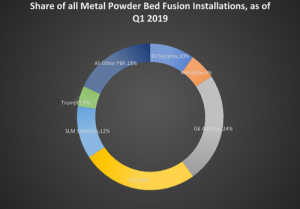 Less than a year ago, 3DPrint.com’s owner, 3DR Holdings, acquired an interest in industry analysis firm SmarTech Markets Publishing, and we continue to have a great relationship. If you’re ever interested in reading the firm’s latest data reports or market studies, you can find them all under the Research tab on our home page. Speaking of research, SmarTech’s VP of Research Scott Dunham, who has prepared the company’s Additive Manufacturing with Metal Powders Report for the last five years, recently released a research note on metal powder bed fusion, titled “Who Will Win (and Who Will Lose) the Metal PBF Marathon?”
Less than a year ago, 3DPrint.com’s owner, 3DR Holdings, acquired an interest in industry analysis firm SmarTech Markets Publishing, and we continue to have a great relationship. If you’re ever interested in reading the firm’s latest data reports or market studies, you can find them all under the Research tab on our home page. Speaking of research, SmarTech’s VP of Research Scott Dunham, who has prepared the company’s Additive Manufacturing with Metal Powders Report for the last five years, recently released a research note on metal powder bed fusion, titled “Who Will Win (and Who Will Lose) the Metal PBF Marathon?”
“Despite what headlines, technologists, and marketing executives would have you believe, the metal 3D printing “race” is a marathon, not a sprint. To continue with the metaphor, we’re probably in about mile 10 of the race today –certainly not at the beginning anymore, but also quite a long way from the end. We are now about twenty three years since the first commercial metal powder bed fusion (PBF) systems came into view,” Dunham wrote.
“With so many closely comparable suppliers of metal PBF equipment now vying for market share, this begs the question, who has what it takes to make it? Everyone in the race today is working toward similar visions of an “Industry 4.0” future that hinges on metalworking going fully digital and highly automated from end to end, from prototyping all the way up to scaled production, with varying levels of customization capabilities based on industry needs along the way.”
Dunham goes on to list some of the technology’s “standout traits,” and names the company’s predictions on how the metal PBF race will turn out: which companies will be the front runners (EOS, GE Additive, Trumpf).
To learn more, check out SmarTech’s recently published “Powder Bed Fusion Markets, A Metal Additive Manufacturing Market Analysis.”
Discuss these stories and other 3D printing topics at 3DPrintBoard.com or share your thoughts below.
The post 3D Printing News Briefs: August 3, 2019 appeared first on 3DPrint.com | The Voice of 3D Printing / Additive Manufacturing.






